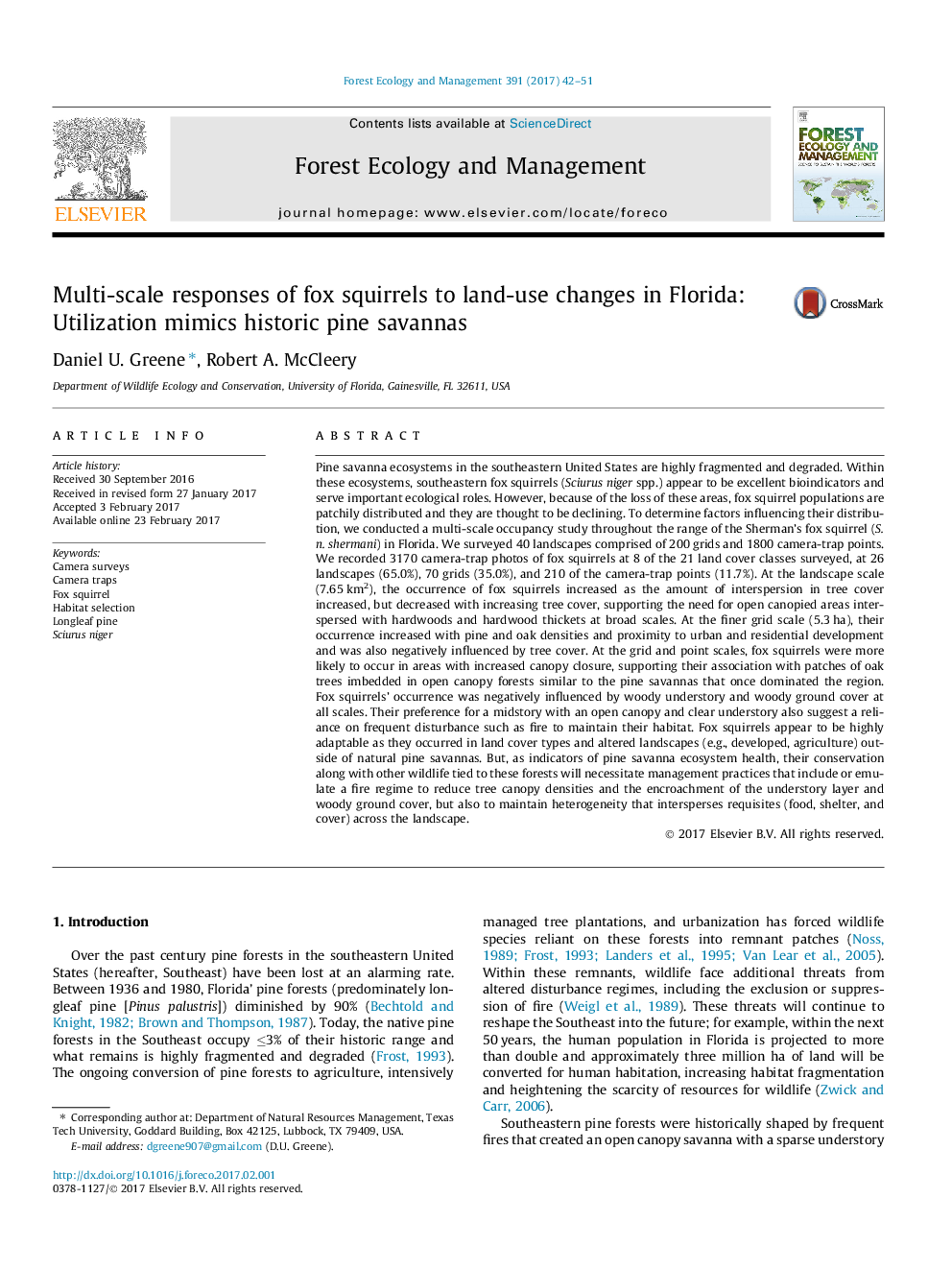| کد مقاله | کد نشریه | سال انتشار | مقاله انگلیسی | نسخه تمام متن |
|---|---|---|---|---|
| 6459391 | 1421367 | 2017 | 10 صفحه PDF | دانلود رایگان |
- Southeastern fox squirrels do not appear to need large swaths of forest as previously suggested.
- Broad scale: areas were favored with increased heterogeneity and low tree cover.
- Local scale: areas were favored with reduced tree cover but increased canopy closure.
- Survey point: areas were favored with low woody understory and ground cover.
- Fox squirrels appear to be highly adaptable and resilient to habitat loss.
Pine savanna ecosystems in the southeastern United States are highly fragmented and degraded. Within these ecosystems, southeastern fox squirrels (Sciurus niger spp.) appear to be excellent bioindicators and serve important ecological roles. However, because of the loss of these areas, fox squirrel populations are patchily distributed and they are thought to be declining. To determine factors influencing their distribution, we conducted a multi-scale occupancy study throughout the range of the Sherman's fox squirrel (S. n. shermani) in Florida. We surveyed 40 landscapes comprised of 200 grids and 1800 camera-trap points. We recorded 3170 camera-trap photos of fox squirrels at 8 of the 21 land cover classes surveyed, at 26 landscapes (65.0%), 70 grids (35.0%), and 210 of the camera-trap points (11.7%). At the landscape scale (7.65Â km2), the occurrence of fox squirrels increased as the amount of interspersion in tree cover increased, but decreased with increasing tree cover, supporting the need for open canopied areas interspersed with hardwoods and hardwood thickets at broad scales. At the finer grid scale (5.3Â ha), their occurrence increased with pine and oak densities and proximity to urban and residential development and was also negatively influenced by tree cover. At the grid and point scales, fox squirrels were more likely to occur in areas with increased canopy closure, supporting their association with patches of oak trees imbedded in open canopy forests similar to the pine savannas that once dominated the region. Fox squirrels' occurrence was negatively influenced by woody understory and woody ground cover at all scales. Their preference for a midstory with an open canopy and clear understory also suggest a reliance on frequent disturbance such as fire to maintain their habitat. Fox squirrels appear to be highly adaptable as they occurred in land cover types and altered landscapes (e.g., developed, agriculture) outside of natural pine savannas. But, as indicators of pine savanna ecosystem health, their conservation along with other wildlife tied to these forests will necessitate management practices that include or emulate a fire regime to reduce tree canopy densities and the encroachment of the understory layer and woody ground cover, but also to maintain heterogeneity that intersperses requisites (food, shelter, and cover) across the landscape.
Journal: Forest Ecology and Management - Volume 391, 1 May 2017, Pages 42-51
